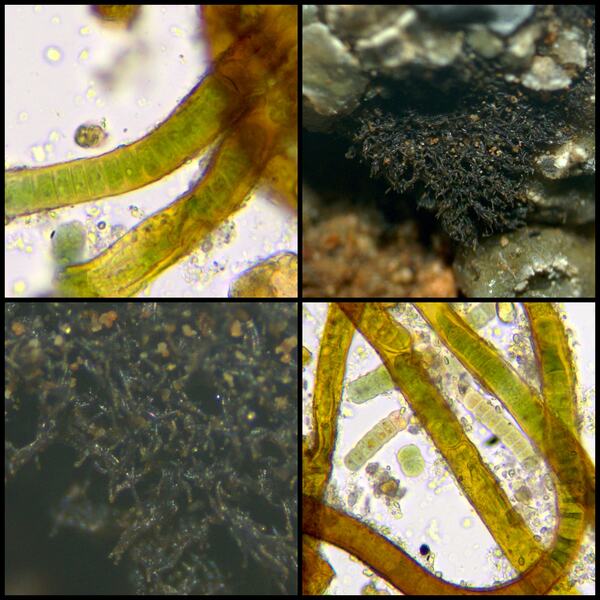Thermutis velutina (Ach.) Flot.
Linnaea, 23: 170, 1850. Basionym: Lichen velutinus Ach. - Lichenogr. Suec. Prodr.: 218, 1799.
Synonyms: Collema pannosum Hoffm.; Collema velutinum (Ach.) Ach.; Collema velutinum var. pannosum (Hoffm.) Rabenh.; Gonionema velutinum (Ach.) Nyl.
Description: Thallus minutely filamentous, forming up to 1 cm wide mats or flattened pillows on the rock, consisting of 10-12(-15) µm thick, simple or branched, brown-black, more or less ascending filaments without a central strand, each filament including a row of cells of Scytonema, whose gelatinous sheath is loosely infected with a few elongated hyphae, some of which usually produce haustoria that penetrate the cyanobacterial cells. Apothecia biatorine pycnoascocarps, 0.2-0.5 mm across, arising laterally on the filaments, dark reddish brown, with a concave, poriform disc, and a thick proper margin. Proper exciple of loosely intertwined hyphae, brown in outer part, colourless within; hymenium 100-150 µm high, colourless or brownish in upper part, K/I+ blue; paraphyses simple, thickened at apex; hypothecium colourless. Asci 8(-12)-spored, cylindrical, thin-walled, K/I+ blue. Ascospores 1-celled, hyaline, ellipsoid, 9-15 x 5-8 µm. Pycnidia arising laterally on the filaments, with a reddish brown ostiole. Conidia globose, formed terminally on the conidiophores, 1-2 μm wide. Photobiont cyanobacterial (Scytonema), the cells arranged in chains, 9-15 x 6-7 µm; photobiont trichomes with false branching, i.e. cell divisions exclusively anticlinal; when the photobiont trichome splits, the formerly connected ends start growing independently to form V-shaped branching (visible at least in younger parts of the thallus); trichomes often paired, but tips free and diverging. Spot tests: all negative. Chemistry: without lichen substances.
Growth form: Fruticose filamentous
Substrata: rocks
Photobiont: cyanobacteria, filamentous (e.g. Nostoc, Scytonema)
Reproductive strategy: mainly sexual
On otherwise dry surfaces with short periods of water seepage after rain
Commonnes-rarity: (info)
Alpine belt: absent
Subalpine belt: very rare
Montane belt: extremely rare
Dry submediterranean belt: absent
Humid submediterranean belt: absent
Padanian area: absent
pH of the substrata:
1 2 3 4 5
Solar irradiation:
1 2 3 4 5
Aridity:
1 2 3 4 5
Eutrophication:
1 2 3 4 5
Poleotolerance:
0 1 2 3
Altitudinal distribution:
1 2 3 4 5 6
Rarity
absent
extremely rare
very rare
rare
rather rare
rather common
common
very common
extremely common
Loading data...
Occurrence data
Predictive map
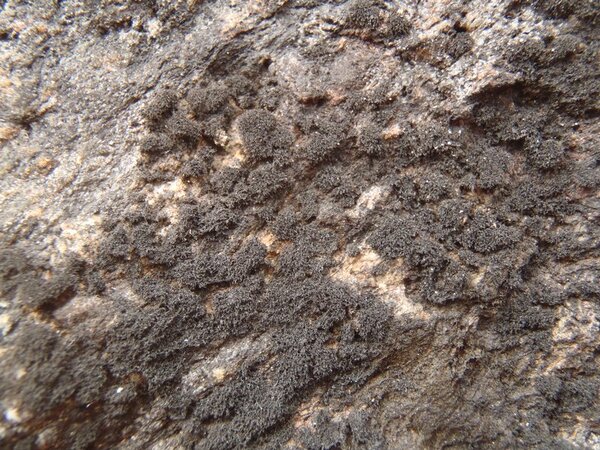
Curtis Randall Björk – CC BY-SA 4.0
Clearwater Valley, British Columbia, Canada, on boulder at shore of white-water river
09.08.2015
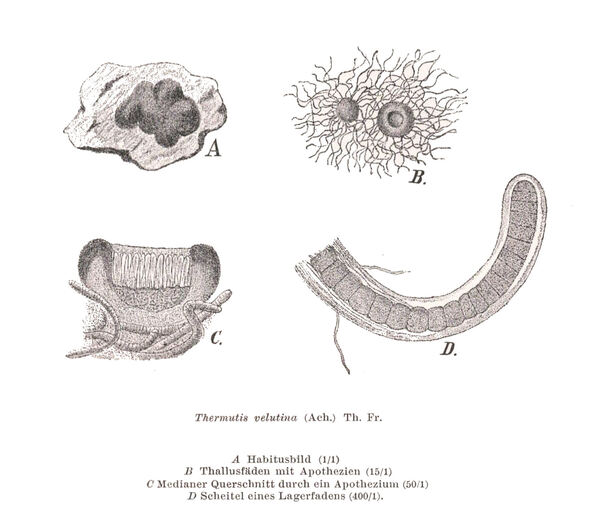
Zahlbruckner A. 1926. Lichenes (Flechten). In: Engler A. (ed.): Die natürlichen Pflanzenfamilien. 2nd ed., vol 8, W. Engelmann, Leipzig, 270 pp.
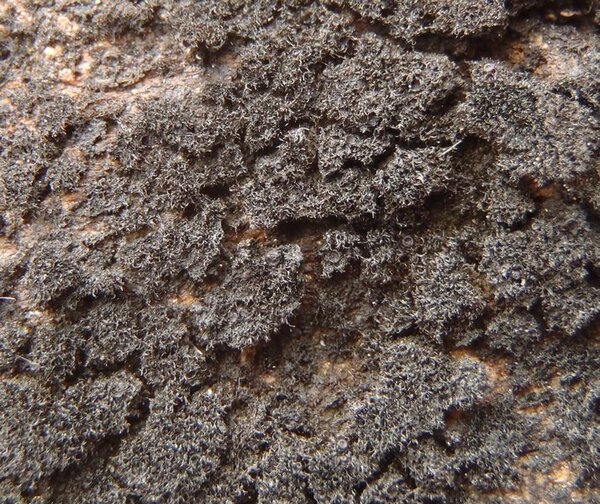
Curtis Randall Björk – CC BY-SA 4.0
Clearwater Valley, British Columbia, Canada, on boulder at shore of white-water river
09.08.2015
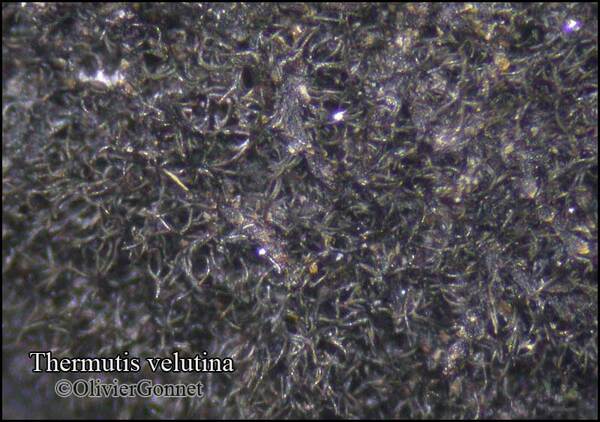
Courtesy Danièle et Olivier Gonnet - Source: https://www.afl-lichenologie.fr/Photos_AFL/Photos_AFL_T/Textes_T2/Thermutis_velutina.htm
France, 3/7/2011 - sur gabbro - session AFL en Corse
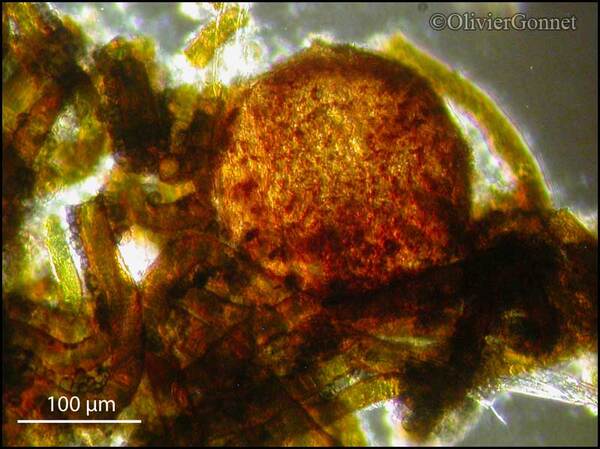
Courtesy Danièle et Olivier Gonnet - Source: https://www.afl-lichenologie.fr/Photos_AFL/Photos_AFL_T/Textes_T2/Thermutis_velutina.htm
France, 3/7/2011 - sur gabbro - session AFL en Corse
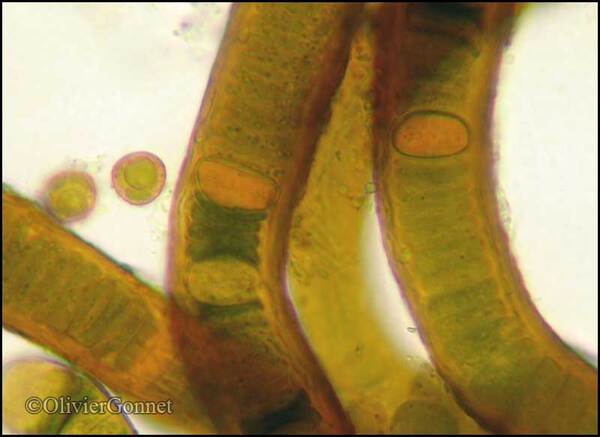
Courtesy Danièle et Olivier Gonnet - Source: https://www.afl-lichenologie.fr/Photos_AFL/Photos_AFL_T/Textes_T2/Thermutis_velutina.htm
France, 3/7/2011 - sur gabbro - session AFL en Corse
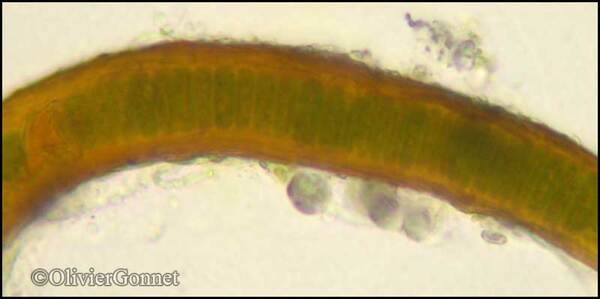
Courtesy Danièle et Olivier Gonnet - Source: https://www.afl-lichenologie.fr/Photos_AFL/Photos_AFL_T/Textes_T2/Thermutis_velutina.htm
France, 3/7/2011 - sur gabbro - session AFL en Corse
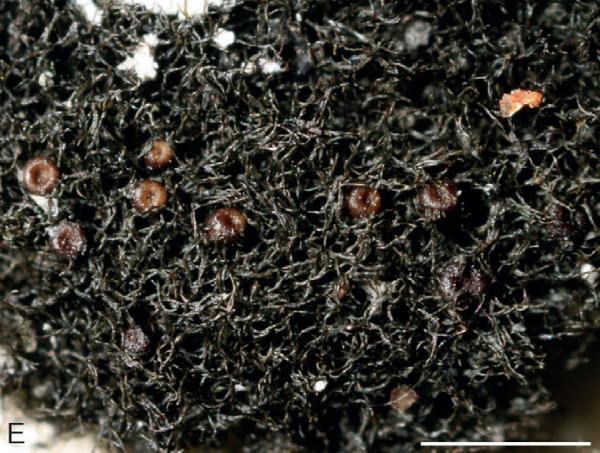
Source: Prieto M., Wedin M., Schultz M. 2024. Phylogeny, evolution and a re-classification of the Lichinomycetes. Studies in Mycology, 109: 595-655. - CC BY-NC-ND
Thermutis velutina, filamentous, branches furcate, shape determined by Scytonema
cyanobiont, biatorine apothecia lateral (Lich. Fenn. 51b, W1903-638). Scale bar: 1 mm.
Growth form: Fruticose filamentous
Substrata: rocks
Photobiont: cyanobacteria, filamentous (e.g. Nostoc, Scytonema)
Reproductive strategy: mainly sexual
On otherwise dry surfaces with short periods of water seepage after rain
Commonnes-rarity: (info)
Alpine belt: absent
Subalpine belt: very rare
Montane belt: extremely rare
Dry submediterranean belt: absent
Humid submediterranean belt: absent
Padanian area: absent
pH of the substrata:
| 1 | 2 | 3 | 4 | 5 |
Solar irradiation:
| 1 | 2 | 3 | 4 | 5 |
Aridity:
| 1 | 2 | 3 | 4 | 5 |
Eutrophication:
| 1 | 2 | 3 | 4 | 5 |
Poleotolerance:
| 0 | 1 | 2 | 3 |
Altitudinal distribution:
| 1 | 2 | 3 | 4 | 5 | 6 |
Rarity
absent
extremely rare
very rare
rare
rather rare
rather common
common
very common
extremely common
Loading data...
Occurrence data
Predictive map

Curtis Randall Björk – CC BY-SA 4.0
Clearwater Valley, British Columbia, Canada, on boulder at shore of white-water river
09.08.2015

Zahlbruckner A. 1926. Lichenes (Flechten). In: Engler A. (ed.): Die natürlichen Pflanzenfamilien. 2nd ed., vol 8, W. Engelmann, Leipzig, 270 pp.

Curtis Randall Björk – CC BY-SA 4.0
Clearwater Valley, British Columbia, Canada, on boulder at shore of white-water river
09.08.2015

Courtesy Danièle et Olivier Gonnet - Source: https://www.afl-lichenologie.fr/Photos_AFL/Photos_AFL_T/Textes_T2/Thermutis_velutina.htm
France, 3/7/2011 - sur gabbro - session AFL en Corse

Courtesy Danièle et Olivier Gonnet - Source: https://www.afl-lichenologie.fr/Photos_AFL/Photos_AFL_T/Textes_T2/Thermutis_velutina.htm
France, 3/7/2011 - sur gabbro - session AFL en Corse

Courtesy Danièle et Olivier Gonnet - Source: https://www.afl-lichenologie.fr/Photos_AFL/Photos_AFL_T/Textes_T2/Thermutis_velutina.htm
France, 3/7/2011 - sur gabbro - session AFL en Corse

Courtesy Danièle et Olivier Gonnet - Source: https://www.afl-lichenologie.fr/Photos_AFL/Photos_AFL_T/Textes_T2/Thermutis_velutina.htm
France, 3/7/2011 - sur gabbro - session AFL en Corse



